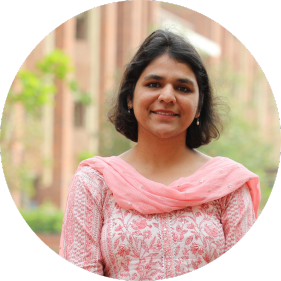Key highlights
- In 2022-23, 58.3 percent of Indians aged 15-59 years (referred to as the working age group) were part of its labour force. But this share was not uniformly distributed across the entire age group
- The 15-19 years cohort had the lowest labour force participation rates (LFPR), while the highest LFPR was recorded among those aged 40-44 years
- Rural areas recorded higher LFPR than the urban areas across age groups (except for the 25-29 years bracket), with the gap increasing by more than 10 percentage points for the 40 years and above age groups
- Unemployment rate remained significantly higher among the lower age groups, 15-29 years of age. Unemployment among women remained higher than men across the sub-age groups, except for the 15-19 age group
In 2022-23, 58.3 percent of Indians aged 15-59 years (referred to as the working age group) were part of its labour force i.e. they were either employed, or looking for work but unemployed. But this share was not uniformly distributed across the entire age group, and nor was it similar in rural areas and urban areas, or for men and women.
In this analysis, we look at the labour force participation across different age groups within the working-age population. The calculations are based on data from the Periodic Labour Force Surveys (PLFS) and pertain to the current weekly status (CWS) of workers. The population is divided into nine different age groups, starting from 15-19 years and progressing in five-year increments up to 55-59 years.
Gendered variations across the working age spectrum
Such an analysis reveals gendered trends. For both men and women, labour force participation rates tend to be the lowest for the 15-19 years age group. This is not surprising since this is the age group where many are still enrolled in education. In 2022-23, 15.7 percent of those aged 15-19 years were part of the labour force. For those aged 20-24 years, the LFPR was 48.4 percent, and older age groups have higher rates of labour force participation.
For men, labour force participation is near universal after 25 years of age, with little variation among sub-age groups. However, among women, there is more heterogeneity within the working age group, though their LFPR remains significantly lower than that of men across age groups.
As CEDA has noted previously, the 20-29 years period is the age when women are most likely to get married and have their first child (the median age of marriage for women aged 25-49 was 18.8 years, and the median age when the women in this age group had their first child was 21.2 years in 2019-21, data from the National Family Health Survey (Round 5) shows). Among men of the same age group, the median age of marriage was higher (24.9 years). This has consequences for their labour force participation.
In the youngest group (15-19 years), only 7.7 percent women were part of the labour force. Less than a quarter (23.4 percent) of women aged 20-24 years were in the labour force, and the share is only slightly higher for women aged 25-29 years (28.1 percent). The likelihood of women being in the labour force was the highest for women in the 40-44 years group – 50.5 percent of women in this group were part of the labour force in 2022-23.
Rural-urban differences
Barring the 25-29 years age group, LFPR was higher in rural areas for all other age groups compared to urban areas. In fact, in the 40 years and older age groups, the gap between LFPR in rural and urban areas widens by more than 10 percentage points (Figure 2).
Again, there is a gendered story behind these patterns. The wide gaps are largely on account of the gaps in the labour force participation rates of rural and urban women across the different age groups. Rural women are more likely to be part of the labour force than their urban counterparts across most age groups, except for two groups. In the 20-24 years and 25-29 years age group, the LFPR is slightly higher for women in urban India than in rural India. But in older groups, the LFPR of rural women was significantly higher, with the difference being as high as 27.8 percentage points in the 50-54 years age group in 2022-23. Even in the 40-44 years, 45-49 years and 55-59 years age groups, the gaps were greater than 20 percentage points.
But this was not the case till a few years ago. In 2017-18, the widest gap between the LFPR of rural and urban women was 9.2 percentage points (among those aged 50-54 years). The gaps have widened with each subsequent year on account of greater increase in the LFPR of rural women as compared to urban women (Figure 3). Similar trends are not observed among men – while the LFPR of rural men was higher than for urban men, the gaps were much smaller as compared to that of women, and these gaps did not see much change between 2017-18 and 2022-23.
It is plausible that this growing difference between rural and urban FLFPRs is due to the limited availability of salaried jobs and casual labour work opportunities for women.
As Figure 4 shows, in rural areas, for the age groups comprising women from 40-59 years, this period saw a notable increase in the share of self-employed women who were working as own-account workers. In urban areas too, the share of women aged older than 40 years and working as own-account workers saw an increase, but the increase was relatively smaller. On the other hand, the share of women in this age group working in salaried jobs shrank (Figure 4).
Unemployment is highest among younger age groups
Not all those who are in the labour force are necessarily employed. Labour force participation includes both those who are employed, and those who are willing to work but do not have work (i.e. unemployed).
Those in younger age groups were more likely to be unemployed in 2022-23, as compared to those aged 30 or more. As CEDA has noted previously, not only are the shares of those unemployed higher among the youth, they are severely high among those with higher levels of education.
Among men, those aged 15-19 years had the highest shares of those unemployed (18.3 percent), followed by those aged 20-24 years (17.8 years) and those aged 25-29 years (7.7 percent). Among women, the highest share of unemployed persons was among those aged 20-24 years (22 percent).
This is likely due to a combination of factors. Research studies have indicated that Indian firms are less likely to hire women in the high-fertility age (see for example Banerjee, Biswas and Mazumder, 2024). Further, women are less likely to report themselves as openly unemployed, and more likely to report themselves as out of labour force (or Not In Education, Employment, or Training (NEET)), especially when labour markets are tight/when less productive work is available. It is possible that younger women are more likely to self-report unemployment than older women.
The share of those unemployed was higher in urban areas for both men and women. A higher share of men and women in rural areas were engaged as unpaid helpers than in urban areas. In contrast, in urban India, the share of those unemployed is higher across age groups, with urban women aged 20-24 years having the highest shares of those unemployed across groups (31.7 percent). The shares of those unemployed are much smaller in older age cohorts, especially for those aged 30 years or more, but across age groups (barring the 15-19 years group), these were higher for women than for men.
Thus, while few women are part of India’s labour force, it seems even fewer jobs are available to them, especially when they are in their twenties, a decade when one often enters and builds the foundation of their professional lives.
To cite this analysis: Akshi Chawla & Kulvinder Singh (2024). “How does labour force participation vary across Indian states?” Centre for Economic Data and Analysis (CEDA), Ashoka University. Published on ceda.ashoka.edu.in
If you wish to republish this article or use an extract or chart, please read CEDA’s republishing guidelines.
 137
137 Copied
Copied



